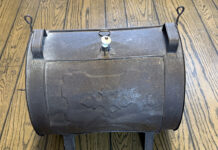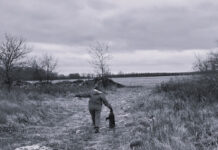Some observers report more birds than ever. Other ask why none have returned.
My experience has been equally confounding. I saw my first hummer this spring April 11, a full 11 days sooner than my previous first date, so I expected lots of birds this year. And the map of returning hummers at www.hummingbirds.net offered more reason for optimism.
But from April 11 through the end of May, I saw only one or two hummers at my feeders. Days passed when I didn’t see a single bird.
Rains brought birds
On the first weekend of June, however, thing changed. Thunderstorms raged, and heavy rain fell all weekend. Over that three-day span I went from seeing one or two hummers to seeing as many as eight or nine at a time.
And because they move so quickly and are hard to count, there were probably again as many that I could not count. It seemed like the middle of July, just after young birds leave the nest.
‘Normal’ year
Normally hummers return in late April or early May. Males arrive first and set up territories; female follow a few days later. After a few days rest, breeding behavior commences.
Males display for females by flying in large U-shapes arcs. Before mating, females often “dance” with a male by flying face to face.
After days of courtship and displays, mated females find nesting sites, build nests, and lay two eggs. For 16 days she incubates the eggs, and then she raise the young by herself.
After about three weeks, young hummers leave the nest and suddenly nectar feeders become hubs of activity. Usually that’s in mid- to late-July.
Nesting early?
I’m wondering if my hummers nested early this year. I decided to ask an expert — Alabama-based Bob Sargent, hummingbird bander extraordinaire and guru to hummer banders all across the country.
I e-mailed Bob, explained the situation, and asked his opinion. Sargent thought it unlikely that hummers in West Virginia had already nested.
He told me the first fledgling hummer he knew of was banded on June 7 in Arkansas.
He explained, “It’s fairly common to have a rush of hummers at feeders after a rain. Insect movement is greatly reduced, and nectar often drips out of flowers if the blossom droops downward.”
Look closely
That makes perfect sense, but this parade of hummingbirds has continued for two weeks. I’m watching them closely, hoping to see field marks indicative of fledgling birds.
Sargent advised that, “Newly fledged hummers have pristine white tips on at least their outer three tail feathers. And both sexes, when fledged, have buffy feather edging on the back of the head and down the nape of the neck.”
Now that I know what to look for, I just need these birds to cooperate and slow down so I can actually see these details.
If you’ve seen more or fewer hummers than usual so far this year, let me know. I’d especially like to hear from anyone who has seen a pulse of hummers at feeders weeks ahead of schedule.
Recaptured hummer
Speaking of hummingbirds, I just saw an e-mail from a bander in Michigan. Nothing gets a bander more excited that recapturing a bird he banded years earlier.
The excitement in Michigan-based Allen Chartiers’ words was palpable.
“Never have I captured a bird that was banded more than five years before. Until today. When I looked at the band, I immediately knew it was an older one, as the numbers were printed smaller and thinner than they are now….
“This particular adult female ruby-throat was banded on July 11, 200,3 at the same home where she was recaptured. She has been recaptured at this same home in 2004, 2005, 2006, and 2008. She was an adult when banded, so using the Bird Banding Lab’s method for calculating age, she is at least 8 years old. Not a record, but the oldest one I’ve ever had.
“Since then, she has flown almost enough miles to completely encircle the earth! If I’m having this much fun now, I’ll be delirious by August!”












In East Texas (between Dallas & Shreveport, La.) we have not been blessed with many hummers this year. My first one was on April 10th and I’ve only seem 6-8 since then. I’m thinking perhaps the hurricane a couple of years ago still has them all shook up. But I sure do miss the little guys!
You mentioned Bob Sargent and I thought you might know when he is supposed to be in the Jackson, MS area. Ken Hackman mentioned that he would be here, but didn’t say when. I have been filling my 3 feeders twice a day and become so very interested in the birds. I would love to hear Bob speak. If you have his email so I could find out his schedule I would love to do so. Or if you happen to know when he will be here please let me know. Thanks, Carol Rives
Here in East Texas we have seen very few hummers. In the past, we have had around 5 feeders up and have gone through quite a bit of sugar! Where are they? Would really love to know what happened to the hummers. Your response is very much appreciated!!
Lori